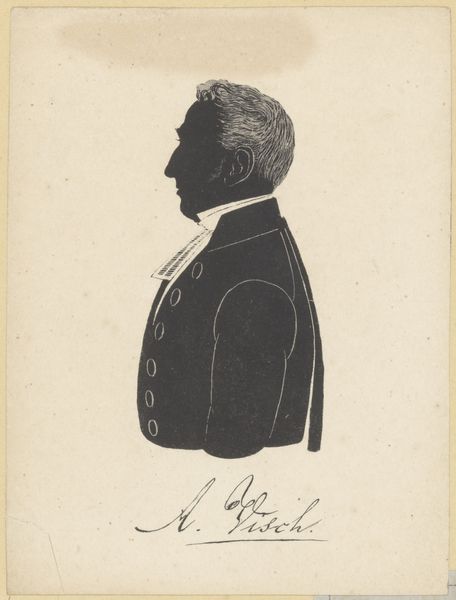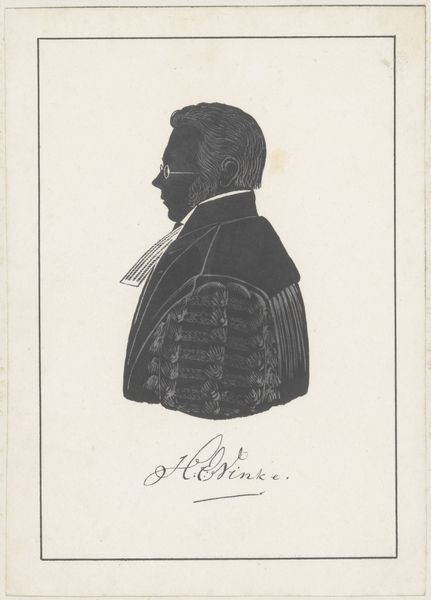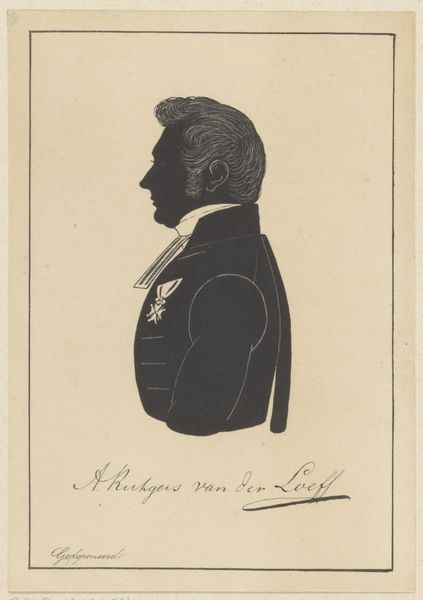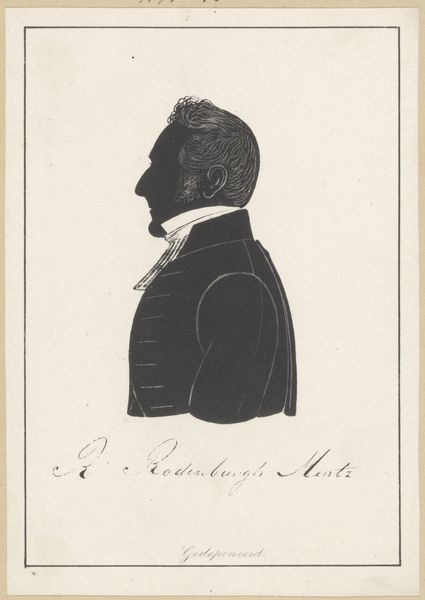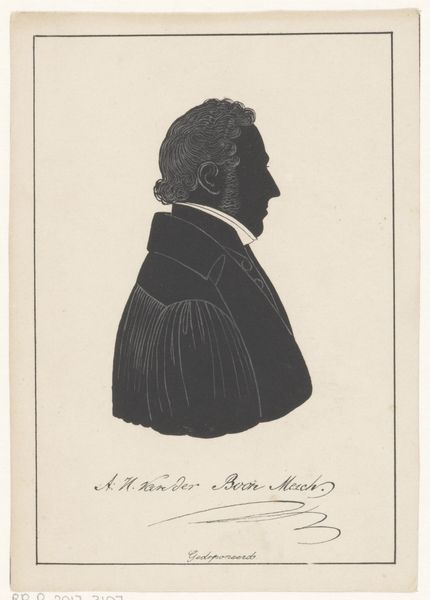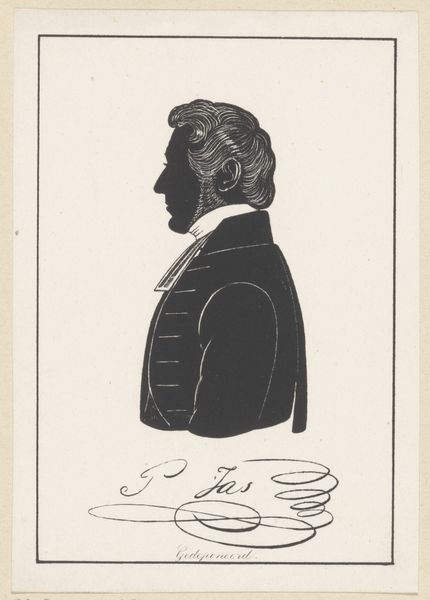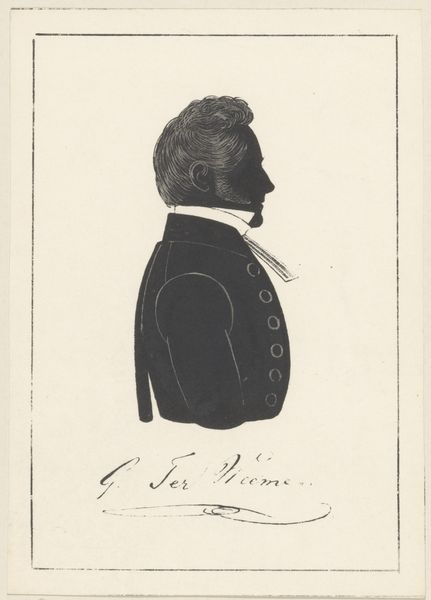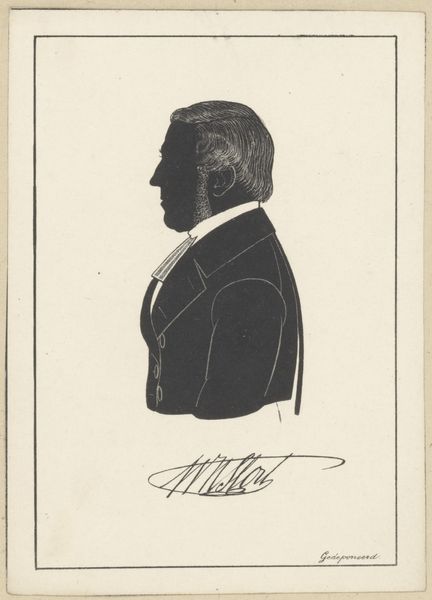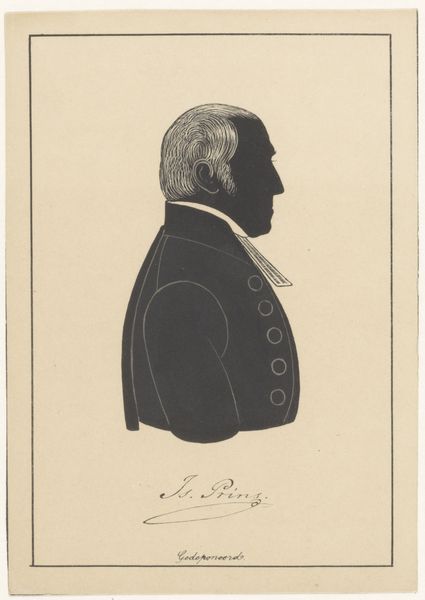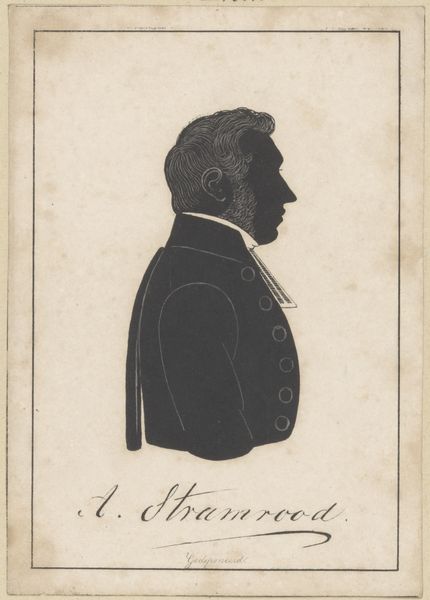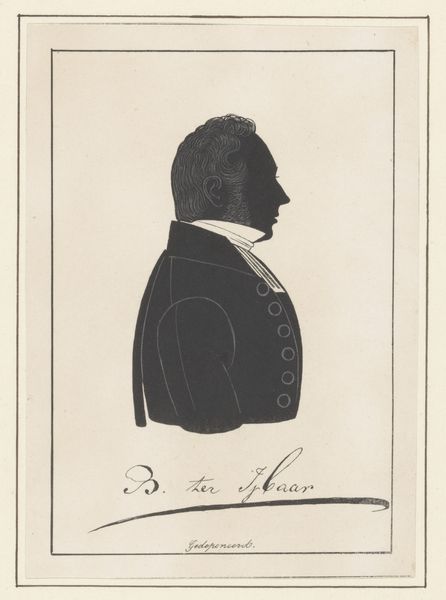
Silhouetportret van onbekende man met twee onderscheidingen 1809 - 1848
0:00
0:00
pieterivbarbiers
Rijksmuseum
drawing, paper, ink
#
portrait
#
drawing
#
paper
#
ink
#
romanticism
Dimensions: height 152 mm, width 108 mm, height 205 mm, width 145 mm
Copyright: Rijks Museum: Open Domain
Pieter Barbiers the fourth made this silhouette portrait of an unknown man with pen and black ink in the first half of the 19th century. The silhouette as a portrait medium was in vogue at that time because it offered a relatively inexpensive alternative to painted portraiture, enabling a wider range of social classes to participate in portrait culture. This particular portrait depicts a man in formal attire, complete with what appear to be military decorations, suggesting a person of some social standing or professional achievement. Made in the Netherlands, it reflects the values and hierarchies of Dutch society in the post-Napoleonic era. The detailed rendering of the man’s hair and clothing indicate the artist’s skill in capturing likeness and social status through minimal means. Art historians use resources like period newspapers, fashion plates, and military records to understand the sitter's status. These resources allow a deeper appreciation of the artwork’s role in documenting and reinforcing societal norms.
Comments
No comments
Be the first to comment and join the conversation on the ultimate creative platform.
